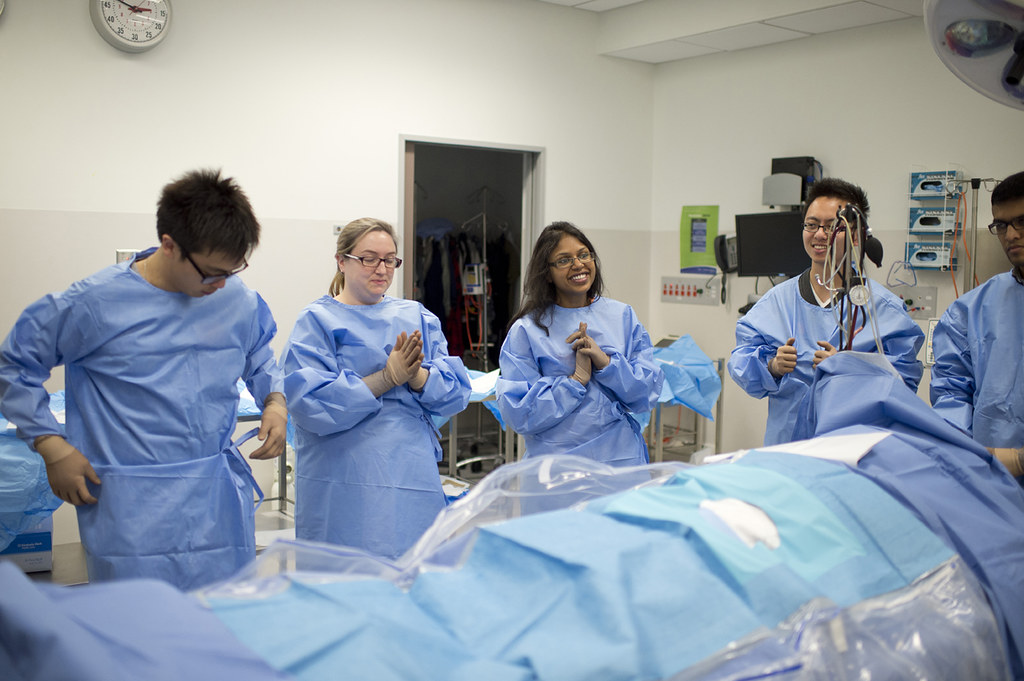Every third-year medical student knows the feeling: the mild, sometimes high level of anxiety walking into the hospital or clinic for the first time. Internal thoughts jumping from “Where am I supposed to report?” to “Okay, I made it here … now, what does the team expect me to do?” A few weeks into the rotation, those same questions still pop up. Eight weeks later when students feel confident in the expectations and how to meet them, medical students transition to a new rotation and start the process all over again. My friends and I wished we knew how to flourish from the beginning, so we decided to create Wards & Boards, a peer-to-peer mentorship mobile app. The app compiled advice from fourth-year medical students who completed each clerkship designed for third-year students beginning their first rotation.
Our third-year medical students received access to Wards & Boards at the beginning of July. Compared to shared Google Docs or Excel sheets, the app is user-friendly and allows students to navigate more intuitively to the desired information rather than scrolling lengthy documents or using search commands to find information that may or may not be there. Also, receiving specific advice on clinical sites’ expectations of students from classmates who have completed the rotation sets clear goals for success. The app can catalog the most up-to-date helpful information without making a new document and update it instantaneously. Lastly, Wards & Boards has a feature that allows users to rate the most beneficial advice and contribute new information once they finish a rotation. That way, students use tried-and-true methods while also staying current.
The most important part of Wards & Boards is the “Rotations” section where users can find the exact location for a clinical site, how to dress, what to bring, and site-specific advice on how to succeed and not repeat the same mistakes as previous students. For instance, my classmate experienced firsthand how essential it is to relay a clinical site’s student expectations. On his OB/GYN rotation, a physician sent him home to change because he was in business casual attire rather than scrubs. The physician said the previous medical student was supposed to relay this by contacting the student directly via text, word-of-mouth or email. Now, a classmate can simply just sign onto Wards & Boards and perform the following steps:
1. Click the OB/GYN tab:

2. Go to the “rotations” subsection and find his clinical site:


3. Click the “edit” symbol and mark the checkbox with scrubs rather than business casual, so people come in the preferred attire and do not make the wrong first impression.

Also, each clerkship requires specific assignments such as oral presentations and written history and physicals. For surgery, students must know the history of particular techniques, critical moments in the procedure and potential complications. Whereas on the Internal Medicine clerkship, students should write highly detailed notes with pertinent differential diagnoses and extended explanations for the treatment plan. Wards & Boards gives assignment-specific advice and provides a top-level example so that students know what high-quality submissions look like.
Even if a medical student comes prepared for clinical training, how does one balance 40 to 80 hours in the hospital, time spent on assignments, and prepare for the shelf exam while balancing a social life, free time and required tasks of daily living like exercise, food, groceries and laundry? On my internal medicine rotation it took me three weeks to figure out what I should be doing. I spent 10 hours at the hospital each day and then focused on the 1,400+ questions on internal medicine in a popular question bank. If I had known the time-constraints at the start, my study schedule would have been far more efficient. Wards & Boards has a “For The Shelf” section dedicated to reducing the learning curve by allowing users to post successful study schedules and highly rated resources. Medical students have a wide array of learning styles. Some examples include:
Study plans have a breakdown by week:

Shelf-specific advice:

Users can choose a schedule that suits their learning strategy. If they find a particular study plan helpful, they can upvote that schedule, so future users know what has worked for most people. If none of the schedules work for them, they can look at our student-rated resource system, configure their plan, and post it to the app.

In my experience, medical students are hard-working, driven people that want to help each other out. It is not easy to find a balance in juggling clinical duties and studying for exams. Our clinical duties, study schedules, and personal life impede us from sharing knowledge in an organized fashion that can have a lasting impact. However, when allowed to share our experience in the easy-to-use app, a student’s experience can benefit all Wards & Boards users. The app removes the obstacles from giving and receiving our classmates’ valuable information and promotes success in the wards and on the boards.
Image credit: Surgery Workshop 2012 (CC BY-NC 2.0) by Monash University

